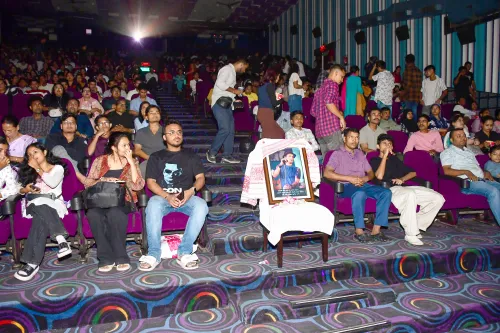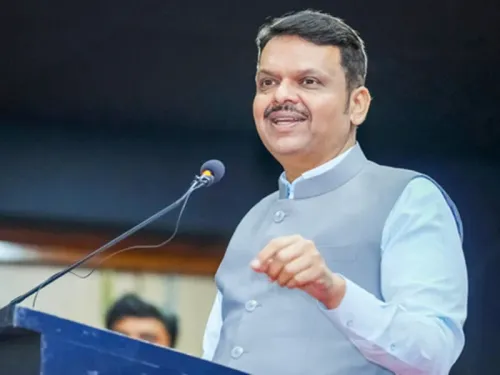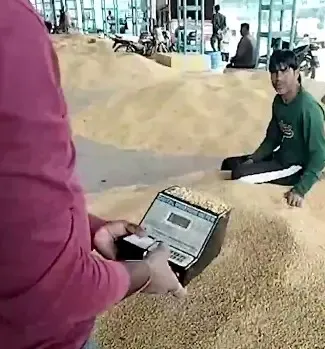How Does Fake News on Social Media Challenge Electoral Integrity?

Synopsis
Key Takeaways
- Fake news significantly impacts electoral integrity.
- The Election Commission is actively combating misinformation.
- Social media is a major platform for the spread of false information.
- Voters can verify electoral rolls through official sources.
- Technology aids in the dissemination of both real and fake news.
New Delhi, Oct 31 (NationPress) In 2020, the Bihar Assembly election was announced during a time when the nation was gradually emerging from the Coronavirus pandemic and citizens were cautiously resuming daily activities after the 'lockdown'. The internet became the most effective communication tool.
Although the electoral process needed to proceed as mandated by the rules of a Parliamentary democracy, the Election Commission imposed strict regulations on physical campaigning to ensure adherence to health and hygiene protocols. As political campaigns intensified online, fraudulent activities also escalated, with election propaganda infiltrated by fake news intended to sway voters. Some instances were identified, while others went unnoticed.
As technology facilitated the delivery of electoral information to mobile devices, it simultaneously brought forth a surge of misleading and fraudulent content. The proliferation of misinformation and disinformation on social media became a significant challenge to maintaining electoral integrity, alongside issues like monetary influence and breaches of the Model Code of Conduct. Nonetheless, the Bihar election of 2020 was successfully conducted against considerable odds.
Looking ahead, the 2025 Assembly elections will mark the first state elections to take place after the Election Commission introduced a “register” aimed at tracking false and misleading information throughout the electoral process, along with answers to frequently asked questions. This “Myth vs Reality Register” was launched on April 2, 2024, shortly before that year’s Lok Sabha elections, and will be continually updated with insights from upcoming electoral exercises monitored by the Commission.
Despite technological advancements and the vast expanse of the internet, monitoring and disseminating information that counters fake news remains labor-intensive and can be challenging.
In August of this year, the Election Commission refuted claims circulating on various social media platforms that it had abruptly removed e-voter rolls for numerous states from its website. The Commission clarified that the electoral rolls for all 36 States and Union Territories are available for download at ‘voters.eci.gov.in’.
On October 24, the poll body issued an advisory outlining guidelines for the use of AI-generated content in election campaigning leading up to the Bihar Assembly elections this year. The spread of fake news online is not new; however, its prevalence has surged with the increased use of social media and video communication apps during the pandemic-induced lockdowns.
A few years ago, researchers from the Massachusetts Institute of Technology (MIT) discovered that false information travels significantly faster and further online compared to true information. Their findings, published in the journal Science, indicated that fake news spreads more rapidly on Twitter (now X) due to human engagement rather than automated bots. Such posts containing inaccuracies were found to be 70% more likely to be retweeted than truthful ones.
The researchers examined a vast dataset consisting of approximately 126,000 news cascades on X (formerly Twitter), which included over 4.5 million tweets from around 3 million users between 2006 and 2017.
To ensure accuracy, the study was based on evaluations from six independent fact-checking organizations, leading to a high level of agreement regarding the accuracy of the news stories.
Importantly, fake news was particularly prominent in the political arena.
“Whether in India, the UK, or the United States, where social media is heavily utilized to engage specific voter demographics, you will encounter such misinformation and disinformation,” stated Dr. Sambit Pal, In-Charge Director at the International School of Broadcasting and Journalism, MIT Art, Design and Technology University, Pune.
“Fake news has become an essential aspect of political communication globally. In India, social media has been aggressively leveraged by political parties, employing dedicated IT teams to micro-target voters and shift narratives. Many supporters misuse this process to align with their own agendas,” added Dr. Pal, who is also affiliated with the India Training Network of the Google News Initiative, conducting workshops on fact-checking and verification of fake news.









